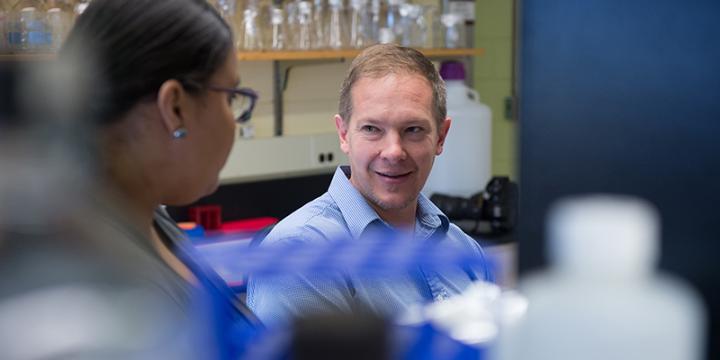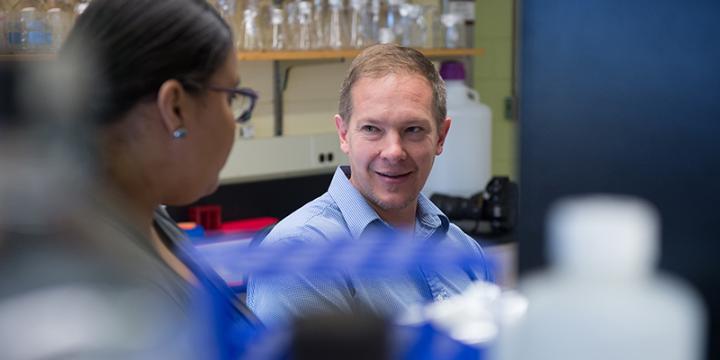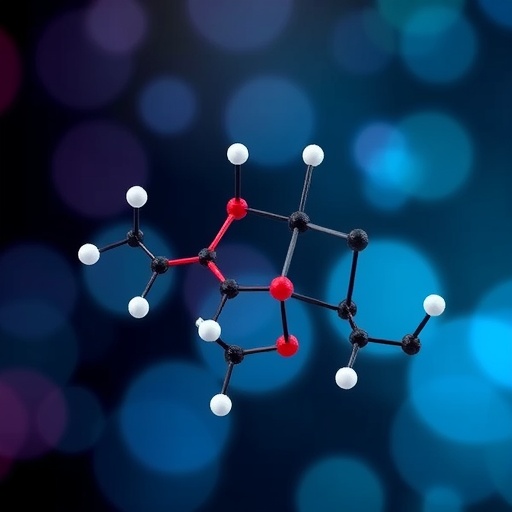
Credit: (Photo: Sally McCay)
The discovery of a protein signature that is highly predictive of leukemia could lead to novel treatments of the leading childhood cancer, according to new study showing that competition among certain proteins causes an imbalance that leads to leukemia.
The new study in the journal Nature Immunology reveals that the activation of a protein known as STAT5 causes competition among other proteins that leads to acute lymphoblastic leukemia (ALL). If a drug could be developed to prevent the initial activation of STAT5 and restore the natural balance of proteins, ALL could potentially be treated more effectively.
Blood cancers account for nearly 10 percent of all newly diagnosed cancer cases in the United States. Childhood acute lymphoblastic leukemia – a type of cancer in which the bone marrow produces too many immature lymphocytes (a type of white blood cell) – accounts for three out of every four cases of leukemia and is the most common in children under age five.
Prior research shows that certain genetic mutations common in Leukemia have a role in driving the disease. Authors of the article "Antagonism of B cell enhancer networks by STAT5 drives leukemia and poor patient survival" found that by forcing the activation of STAT5 in mice (constitutively activated alleles forced by the researchers) always produced Leukemia.
"The major outcome of this story is that a signature emerged from looking at the level of activated proteins compared to other proteins that's very predictive of how a patient will respond to therapy," says Seth Frietze, assistant professor in medical laboratory and radiation sciences at the University of Vermont, whose data analysis supported the finding that the ratio of activated STAT5 to IKAROS in patients is very prognostic and predictive of the outcome. "That's a novel finding. If we could find drugs to target that activation that could be an incredibly effective way to treat Leukemia."
Corresponding author Michael Farrar from the Department of Laboratory Medicine and Pathology at the University of Minnesota led a team of 10 researchers that employed an innovative methodology that combines unique mouse models and patient samples in combination with high-throughput DNA sequencing, epigenetic and proteomic analysis. The result was that patients with a high ratio of imbalanced proteins (STAT5 to IKAROS or NF-kB) had far worse prognosis.
Frietze, whose research focuses on how to overcome IKAROS mutations, put the finding in perspective by explaining that "tumor sequencing is currently being used to both risk stratify patients and provide novel therapeutic targets. However, the ways in we are able to use that sequencing information is still limited. This study provides a new way to risk stratify patients, identifying those who are at higher risk or relapse and may therefore need more intense therapy to cure their disease."
###
Media Contact
Jon Reidel
[email protected]
802-578-0447
@uvmvermont
http://www.uvm.edu
############
Story Source: Materials provided by Scienmag





